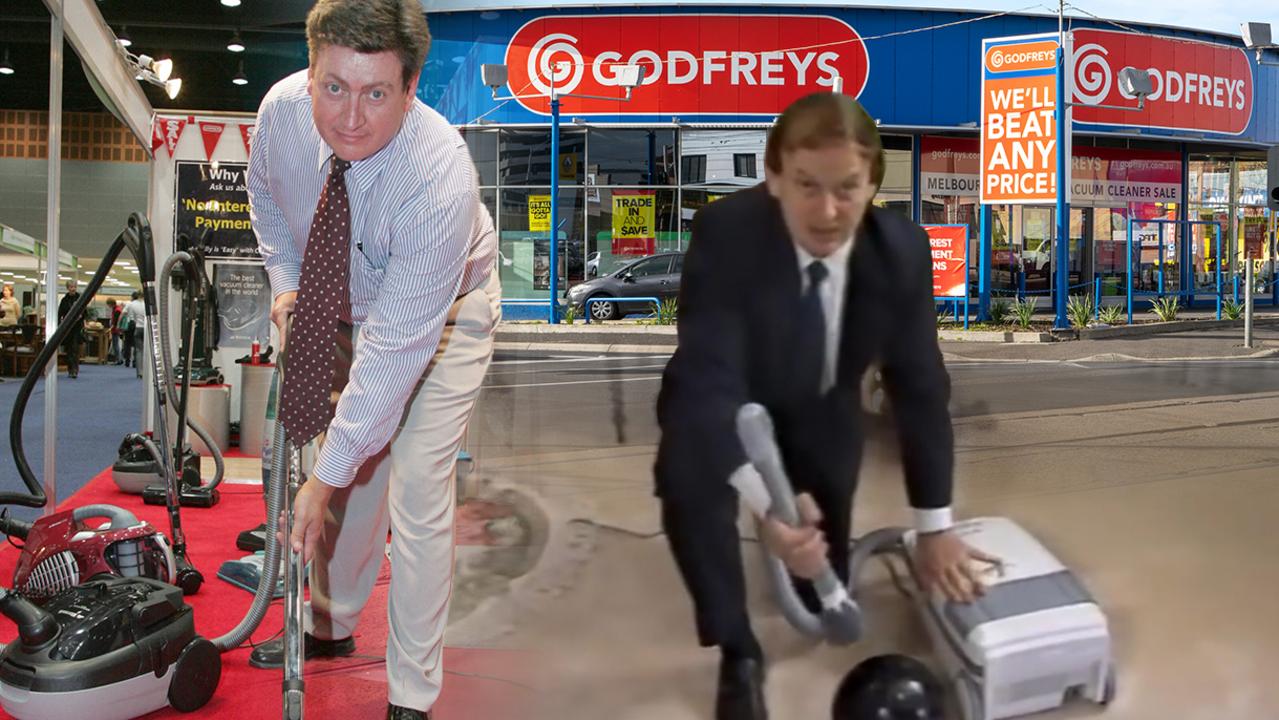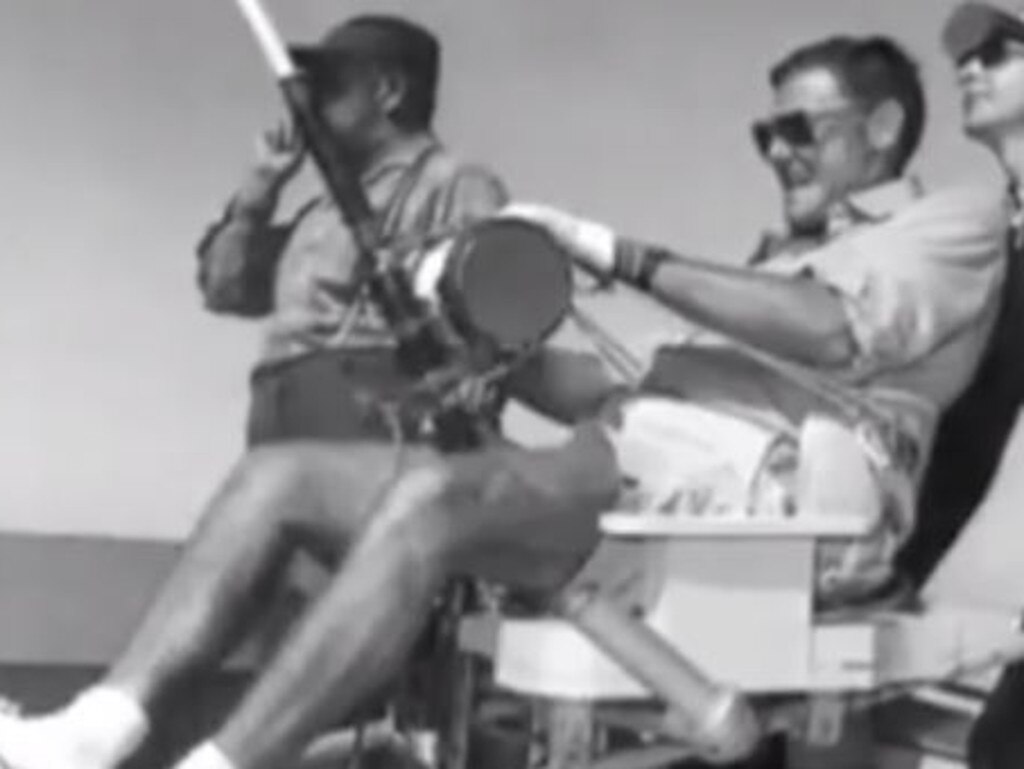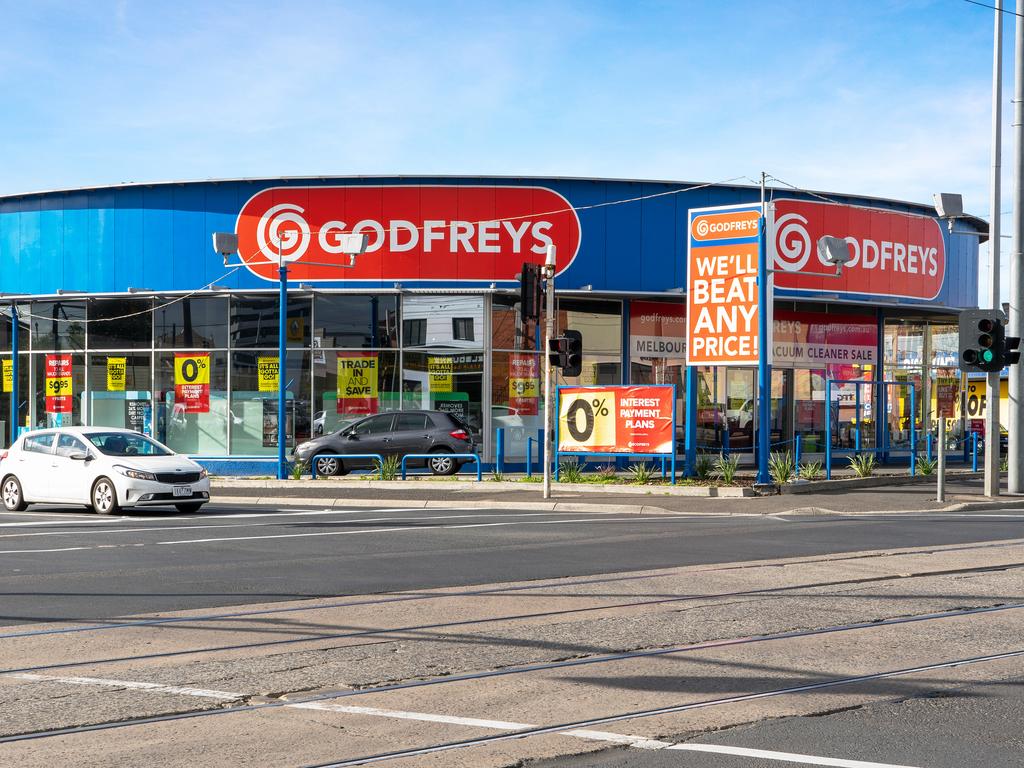How Godfreys went from vacuum cleaner king to closing stores: What lies ahead for Vic retailers
Founded on a handshake — when vacuum cleaner salesmen still flogged their wares door to door — Godfreys evolved into a retail giant. Why is it now in administration?

Victoria
Don't miss out on the headlines from Victoria. Followed categories will be added to My News.
In 1931 — when salesmen still flogged vacuum cleaners door-to-door — Godfrey Cohen bought 30 of them from the newspaper auction columns for $50 and convinced his dad to give him window space in the family furniture shop to promote his wares.
It was a new way of selling vacuums to homemakers, and the birth of what would grow to become the Australian and New Zealand retail giant, Godfreys.
A handshake deal was made with a business partner — a man who liked to go after big fish, called John Johnston — who would go on to lead the company through thick and thin for decades.
Johnston died in 2018, aged nearly 100, and still very much involved with Godfreys.
Perhaps mercifully, he missed the thinnest time for his beloved company — which is now, as the iconic business is placed in administration and stores close.
Rise of Godfreys
The first Godfreys store threw open its doors in Melbourne’s Prahran Market in 1936, with the retailer going on to open another 170 shops over the years, and rising to become a giant in the home cleaning world.
As late as 2022, Godfreys was still calling itself an “empire”, chuffed at the fact it had serviced the carpet cleaning needs of more than three million “happy customers” to that point.
“We continue to lead the market through innovation and plenty of good old-fashioned hard work,” it said.

At nearly 100, John Johnston was still very much active in the business that promised to make householders’ “lives easier, and most importantly, cleaner!”.
Remarkable, but perhaps not as surprising as it might have been if he wasn’t the only man reputed to have caught four different species of game fish weighing more than 453kg — reeling in a black marlin off the Great Barrier Reef, a great white shark off Kangaroo Island, a tiger shark off Moreton Island and a Bluefin tuna off Canada’s Prince Edward Island.
Johnston also held a world record for catching a 142 pound dogtooth tuna on 30 pound line for 15 years.
John Johnston was nothing if not tough and determined.
He was certainly not adverse to “good old-fashioned hard work”.
The fall
This week, Australians learned Godfreys had collapsed into administration, with the future of its 141 stores and 600 staff in doubt.
Administrators appointed to the failed retailer will close about 54 Godfreys stores in the next fortnight, leading to the loss of 193 staff, 171 of whom are based in Australia.
Above the retailer’s proud history website spiel is now a red banner, declaring IMPORTANT MESSAGE TO CUSTOMERS.
“Craig Crosbie, Robert Ditrich and Daniel Walley of PricewaterhouseCoopers (PwC) Australia have been appointed Joint and Several Administrators of Godfreys on 30 January 2024 pursuant to Section 436A of the Corporations Act 200,” the message says.
“During the Administration period, the Administrators intend to trade the Godfreys business while undertaking an immediate operational restructure and sale process. As a consequence of the appointment, there may be some changes that affect customers, particularly with respect to returns and warranties.”


Administrator Craig Crosbie said, that like many retailers, Godfreys had faced a challenging economic and operating environment in recent times, with lower customer demand amid cost of living pressures, higher operating costs, and increased competition.
Mr Johnston’s daughter, Jane Allen, on Tuesday also blamed the “economic era of high inflation, rising interest rates, and intense cost of living pressures”, but added “unprecedented business disruptions of the Covid-19 pandemic” had also played a part in the retailer’s downturn.
She called the situation sad and regrettable, but said the decision to enter administration had been made in the best interests of employees and customers, and was “about securing the company’s future”.

Like most other retailers, Godfreys changed with the times to offer the latest technology, a wider range of products and easy purchase options, such as click and collect.
But the mass of cheap, semi-disposable vacuum cleaner options flooding the market — such as those available at Kmart for a song — would have hurt the retailer that prided itself on its experienced salespeople, customer service and sturdy, reliable vacuum cleaners.
At the other end of the market were Dyson vacuum cleaners — an increasingly sort-after brand, more than capable of promoting and selling its own products, without the help of a vintage vacuum cleaner store demo.
What lies ahead for Aussie retailers?
Australian Retail Association (ARA) chief industry affairs officer Fleur Brown told the Herald Sun on Thursday the loss of Godfreys was “a sad blow for Australian retail”, and represented a dual crisis faced by retailers of a spending slowdown coupled with the rising cost of doing business.
“While it’s very unfortunate timing opening the year with this news, there is powerful resilience within the retail sector and we are likely to see winners and losers in the next twelve months,” she said.

Interest rates coming down would help struggling retailers, Ms Brown said.
But even that would likely have a six-month lag effect, and the year ahead loomed as a challenging one for retailers, she said.
While online shopping had grown “steadily and significantly” across the nation in recent years, Australians still made more than 80 per cent of their purchases in-store and most retailers now offered a combination of both in-store and online shopping services, Ms Brown said, suggesting it was less to blame for retailers’ downturns than other factors like rising rents.
“This year we face the likelihood of a continued spending slowdown coupled with high and increased costs of doing business for retailers. Leasing is a big percentage of that cost and many shop front closures in Victoria are driven by unsustainably high leases coupled with lower CBD foot-traffic,” she said.
“Retailers have great opportunity to flourish in the coming years, however, we are likely to see a number of smaller retailers in particular remain in survival mode for at least the first half of this year until spending recovers.”
Swinburne marketing and retail expert, Dr Jessica Pallant, agreed rising rents were proving lethal for many Victorian retailers.
“Many physical spaces have been closing, and others getting smaller … for a range of reasons but largely due to increasing rent costs combined with decreasing foot traffic,” she said.
Ms Allen said her late father, Mr Johnston, had re-entered the workforce at 100-years-old to guide Godfreys, as he valued so highly his employees — many of which had been with the company for decades.
“Godfreys’ employees and customers are at the heart of everything we do,” Ms Allen said.
“It’s a very emotional time.”
More Coverage
Originally published as How Godfreys went from vacuum cleaner king to closing stores: What lies ahead for Vic retailers








